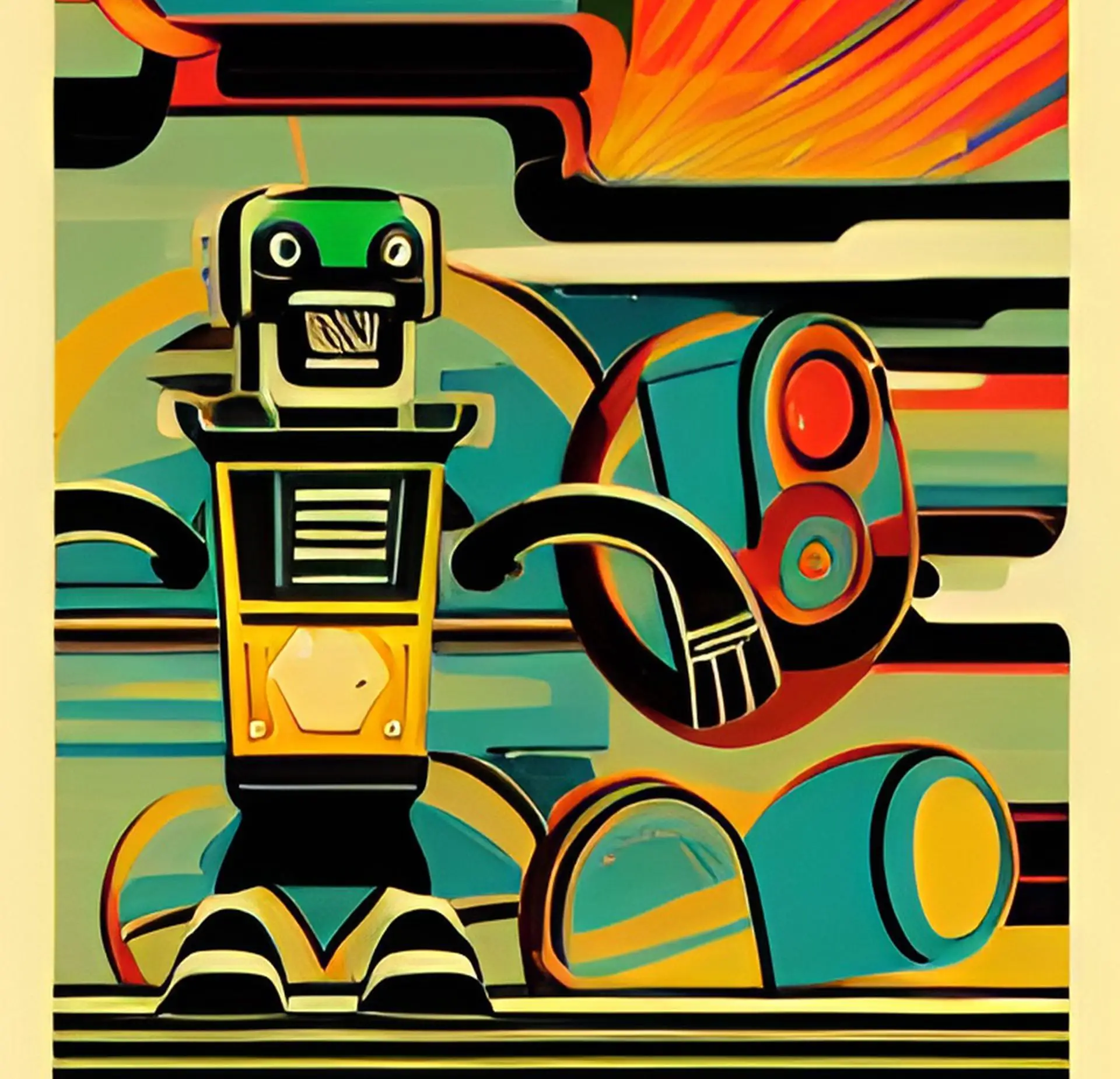Nowadays, almost everyone wants to learn how to use AI, and it would be quite wrong to say that these requests are unreasonable. In 2022, the AI market was worth an estimated $70.9 billion. Although this value is quite impressive, considering that tools such as ChatGPT and Bing AI are just gaining popularity, its worth can reach unbelievable levels for 2023 and beyond. Naturally, AI experts will get the biggest slice of the pie and the need for AI expertise is rising rapidly along with the field itself.
You will understand the effects of AI more clearly when you learn how to use it in real life. In this article, you will find various AI guides about how to use AI as a concept.
AI guides: Learning how to use AI is a game changer
Spoiler alert: Almost every sector in the world will be affected by AI. Yes, even lawyers, doctors, and more. The term “artificial intelligence” (AI) describes machines’ ability to mimic human intelligence. But what if it can be better than humans? We’ve already seen mind-blowing images, essays, and code that takes years of training generated in seconds with AI. So the only race will be about who can use AI faster and better.
@techroastshow Don’t even bother learning to code #ai #chatgpt #techbro #techie #softwareengineer #siliconvalley #seattle #sanfrancisco #bayarea #comedy #funny #fypシ゚viral
The effects of Artificial Intelligence in everyday life are rising, whether we are aware of it or not. AI works in the background whenever we open our Facebook newsfeed, conduct a Google search, purchase a suggestion from Amazon, or book a trip online.
Artificial Intelligence (AI) can be used in various ways to solve complex problems and automate tasks that were previously done manually. Here are some steps to follow when using AI:
- Identify the problem: Determine the specific problem you want to solve or the task you want to automate. It could be anything from customer service to data analysis.
- Collect data: Gather the necessary data that will be used to train the AI system. This data should be relevant, accurate, and comprehensive.
- Choose the appropriate algorithm: Select the AI algorithm that best suits the problem you want to solve. Several algorithms are available, including decision trees, neural networks, and support vector machines.
- Train the AI system: Use the collected data to train the AI system. This involves feeding the algorithm with data and tweaking it to improve its accuracy.
- Test the AI system: After training, test it to ensure accuracy and reliability. This can be done using or deploying a validation set in a real-world scenario.
- Deploy the AI system: Once it has been tested and proven accurate, deploy it in a production environment. This could involve integrating it with existing systems or creating new ones.
- Monitor and maintain the AI system: Continuously monitor the system to ensure that it functions correctly and makes accurate predictions. Update the system when necessary to improve its performance.
Overall, using AI requires careful planning, collecting relevant data, selecting the appropriate algorithm, training the system, testing it, deploying it, and maintaining it to ensure its accuracy and reliability.

The impact of AI on people’s future lifestyles may be seen in nearly every industry. Existing and future technologies like big data, robotics, and the Internet of Things all have this as their major driver. Artificial intelligence will completely change how we do business and live our lives. It helps us in many ways and saves us a lot of time doing routine tasks at home and work, boosting our productivity. But first, you have to learn how to use AI.
How to use AI?
Of course, explaining how to use AI in a simple answer is technically impossible. However, by giving real-life applications, we can tell you what you need to do as a process and how to use AI in your business and private life. Here are the things you should do first to use AI:
- Understand what AI is
- Explore real-life applications and examples
- Find the best AI tools to fix your problems
- Adopt
- Stay up to date
Let’s examine these steps together with AI guides.
What is AI?
Let’s explain it briefly. The field of computer science known as “artificial intelligence” (AI) focuses on creating intelligent machines that can accomplish jobs that would normally need human intelligence. Artificial intelligence (AI) is a multifaceted field of study, but recent advances in machine learning and deep learning are having a revolutionary effect across the board in the technology industry.
AI gets better every day pic.twitter.com/Lz5XfXRJjh
— Elon Musk (@elonmusk) June 20, 2022
With the help of AI, machines can mimic and even surpass humans’ cognitive powers. Artificial intelligence (AI) is becoming increasingly integrated into daily life, from creating autonomous vehicles to the popularity of virtual assistants like Siri and Alexa. That’s why all businesses are currently pouring money into AI systems.
Are you new to AI? You can still get on the AI train. We have created a detailed AI glossary for the most commonly used artificial intelligence terms and explain the basics of artificial intelligence as well as the risks and benefits of AI. Feel free to use the AI guides.
AI has 3 types:
- Narrow AI: Narrow AI is goal-oriented, created to carry out a single task, such as driving a car or conducting an online search, and is exceptionally intelligent at carrying out the particular task it is taught to do.
- General AI: Artificial general intelligence (AGI), also known as strong artificial intelligence (AI) or deep artificial intelligence (AI), is the idea of a machine with general intelligence that mimics human intelligence and/or behaviors, with the ability to learn and apply its intelligence to solve any problem.
- Super AI: Artificial superintelligence (ASI) is a hypothetical kind of artificial intelligence (AI) that goes beyond simply mimicking or understanding human intelligence and behavior.
Do you know to differentiate AI from non-AI? You should learn it. AI has entered our lives so much, and now we have Artificial intelligence laws and regulations. Be careful, there are artificial intelligence security issues.
Are robots artificial intelligence? No, but robots can become intelligent, largely thanks to AI.

Is artificial intelligence better than human intelligence? Before you decide, take a look at real-life AI applications.
Real-life AI applications
If you want to learn how to use AI, you should understand its real-life applications. AI has already begun to be used in many areas. Check out these AI guides to learn more:
- Artificial intelligence in sports: How to use AI in sports is generally about planning strategies, coaching athletes, marketing, and much more, from football to Formula 1. In other words, AI greatly impacts how people watch and consume sports information.
- Artificial intelligence in science: Researchers are unleashing artificial intelligence (AI), frequently in the form of artificial neural networks, on the data torrents in a revolution that spans much of science.
- Artificial intelligence used in the military: Increasingly, AI is being used in the armed forces. This is why the United States and other countries are developing numerous AI applications for use in the military.
- AI in recruitment: Artificial intelligence (AI) in recruiting refers to applying AI to the recruitment process. Recruiters can create or automate workflows using AI or machine intelligence for repetitive, high-volume operations
- AI in gaming: Several industry insiders claim that the most useful applications of artificial intelligence in video games are the ones that go under the radar. There are always new styles of artificial intelligence games to try out. Several types of games will make use of artificial intelligence in unique ways. The best examples of how to use AI in games are NPCs.
- Artificial intelligence and automation: It’s safe to say that the corporate world will be shaken up significantly in the years ahead by the rise of AI and automation. The continued development of these technologies promises to completely alter the ways in which we perform our jobs, make important decisions, and generate wealth.
- Artificial intelligence in banking: Everyone wants to learn how to use AI and make money with it. Advantages of AI in banking range from better service to safer transactions. Personalization and increased ease of use are two areas where artificial intelligence has profoundly affected the banking business.
- Artificial intelligence in developing countries: As of October 2021, 44 countries were reported to have their own national AI strategy plans, showcasing their ambition to be at the forefront of AI innovation.
- Big data and artificial intelligence: The current digital environment and Industry 4.0 are powered by a number of technology developments that enable big data and artificial intelligence. These two innovations aim to extract as much value as possible from today’s massive amounts of data.
- Artificial intelligence in education: In the same way that AI is revolutionizing the vast majority of our daily activities, it is also changing the educational landscape. Due to the growing prevalence of AI-powered tools and platforms in the classroom, teachers, administrators, and policymakers must be familiar with this new field. How to use AI in education is still in progress.
- AI in supply chain management: AI has a bright future in the field of supply chain management. Artificial intelligence (AI) is expected to play a larger role in logistics network operations as technology improves and data becomes more accessible.
- Artificial intelligence in business: Many sectors, such as healthcare, sales, human resources, operations, manufacturing, marketing, and technology, can benefit from using AI systems.
- Artificial intelligence in manufacturing: In the context of production, artificial intelligence (AI) is defined as the capacity of a machine to reason like a human, to behave autonomously in response to both internal and external stimuli, and to predict the likely outcomes of various scenarios. Robots can detect when a tool has worn out, or something unexpected (or even unanticipated) has occurred and take corrective action.
- Artificial intelligence in self-driving cars: There is still a long way to go before fully autonomous vehicles are widely available to the public. Artificial intelligence technologies that are trustworthy and secure enough to be utilized on public roads present a significant problem. The best examples of how to use AI in self-driving cars come from Tesla.
[embedded content]
- AI in financial services: As computing power increases, customer acceptance grows, and regulatory environments shift, financial institutions (FIs) will increase their usage of artificial intelligence (AI). Banks can use AI to improve the customer experience and optimize time-consuming processes by giving customers 24-hour access to their accounts and financial advising services.
- AI in insurance: Using AI in insurance has been hailed as a game-changer because of the positive effects it will have on the economy and society in the long run, specifically through increased risk pooling and better risk reduction, mitigation, and prevention.
- Artificial intelligence customer services: Artificial intelligence as a service (AIaaS) refers to a service that outsources AI to make it easier and more affordable for individuals and organizations to explore and develop AI strategies.
- AI in agriculture: Agricultural AI robots can dig holes in the ground and plant seeds while adhering to established basic patterns and taking into account the area’s unique features. Robots can also manage the growing process and interact with each plant separately. Robots will harvest when the moment is perfect, once again treating each plant exactly as it should.
- Artificial Intelligence in Industry 4.0: Artificial intelligence and machine learning are used by manufacturers to make the most of the vast volumes of data collected from production facilities, departments, partners, and external sources. Artificial intelligence in Industry 4.0 generates insights that improve manufacturing process visibility, predictability, and automation.
- Artificial intelligence design: Machine learning is now more widely available than ever, allowing designers to consider how it might enhance their products with generative AI tools. It is one of the popular reasons that people want to learn how to use AI. Most of the AI guides generally about design tools and chatbots.
These are just some of the popular real-life AI applications that are used with the best AI tools.
Best AI tools
The “How to use AI” question generally asks for specific tools. Almost every day, a new tool, model, or feature pops up and changes our lives, and we have already reviewed some of the best ones. Explore them and find which one can solve your problem.
To learn how to use AI, you must learn how each tool works.
- Text-to-text AI guides
[embedded content]
AI guide: Best AI search engines
Do you want to learn how to use ChatGPT effectively? We have some tips and tricks for you without switching to ChatGPT Plus! AI prompt engineering is the key to limitless worlds, but you should be careful; when you want to use the AI tool, you can get errors like “ChatGPT is at capacity right now” and “too many requests in 1-hour try again later”. Yes, they are really annoying errors, but don’t worry; we know how to fix them.
Do you know a better love story than AI essay writers and plagiarism checkers?
- Text-to-image AI guides
[embedded content]
While there are still some debates about artificial intelligence-generated images, people are still looking for the best AI art generators. Will AI replace designers? Keep reading and find out.
- Other AI guides
Do you want more tools? Check out the best free AI art generators.
Adopting AI
AI adoption refers to incorporating AI-based technologies into existing business infrastructure to mimic the human brain’s problem-solving and goal-attainment skills. A growing number of companies worldwide are turning to artificial intelligence to boost productivity and effectiveness, even though AI is still in its immaturity.

You can join the ranks of early adopters of AI in fields like telecommunications, high technology, and banking.
“We are headed toward a situation where AI is vastly smarter than humans. I think that time frame is less than five years from now. But that doesn’t mean that everything goes to hell in five years. It just means that things get unstable or weird.”
-Elon Musk
When you know what AI can do and how to define your problem, all you have to do to adopt is select an AI tool and keep it running.
Follow the latest developments
The last step of how to use AI is following the latest developments. Artificial intelligence (AI) is a rapidly developing and changing field. Even if you think you have fully integrated it into your company or private life, your system can go to waste if you don’t stay up-to-date with AI.
How to stay up to date in AI? It is best to follow hardworking and creative content producers to follow the latest developments in artificial intelligence. Never miss an AI guide anymore.
The study of AI is a massive field… It makes perfect sense to follow @DataconomyMedia to keep up with the latest events in the industry
— Alan Davis (@AlanDav73775659) February 13, 2023
- SEO Powered Content & PR Distribution. Get Amplified Today.
- Platoblockchain. Web3 Metaverse Intelligence. Knowledge Amplified. Access Here.
- Source: https://dataconomy.com/2023/02/how-to-use-ai-guide-artificial-intelligence/



